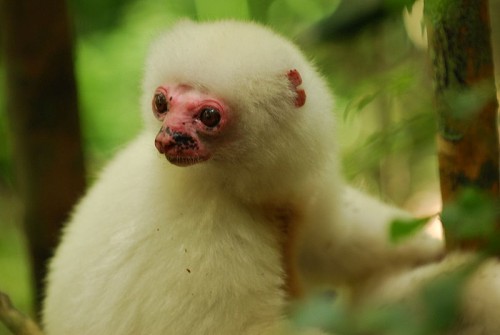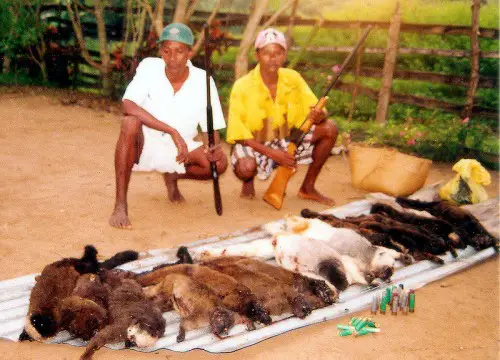Silky Sifaka
One of the largest lemurs in the world is the Silky Sifaka. It is characterised by its long and silky white fur. It is native to north-eastern Madagascar, where is it known by the locals as ‘simpona’. It is also one of the rarest mammals on earth, and it is listed by the International Union for Conservation of Nature as one of the world’s top 25 most critically endangered primates.
The Silky Sifaka is only found within a few protected areas in the north-eastern rainforests of Madagascar. Most of the population can be found at the Anjanaharibe-Sud Special reserve and the Marojejy National Park. Some groups have also been found in the Betaolana Corridor, the Maikra Forest Protected Area, as well as some unprotected forest areas. There is no local taboo against eating this species and therefore it is hunted throughout its range. Other than human hunters, the destruction of its habitat has also led to the decline in the Silky Sifaka’s population. This includes illegal logging of precious woods such as rosewood, slash-and-burn agriculture, and using the trees for fuel wood. Unfortunately, this also occurs in the protected areas of where this large lemur is found.
As mentioned above, the Silky Sifaka is one of the larger sifaka species. It has a head to body length of about 48 to 54 cm. Its tail is about 45 to 51 cm long. This gives this creature a total length of about 93 to 105 cm. It weighs about 5 to 6.5 kilograms. The Silky Sifaka has long, white fur which has a silky texture. However, not all individuals in this species are completely white, as some have black or silver-grey tints on their limbs, back, and crown. The base of the tail can be yellow. Its face and ears are hairless, and its skin is a mixture of black and pink, or completely black or completely pink. Their eyes are a deep orange-red. Its physical appearance is quite distinctive particularly in its range, so it is easily spotted even by amateurs.
The Silky Sifaka has a variable social structure. It lives in groups of between 2 to 9 individuals. Although it spends most of the time resting or feeding, it does devote plenty of time to social behaviour such as grooming, playing, and travelling. Females tend to take priority over males when feeding. They eat mostly seeds and leaves, but they also eat flowers and fruits. They have also been known to eat soil on occasion.
This animal is a seasonal breeder. It only mates once a year during the start of the rainy season. Like other sifaka species, it is common to have non-maternal infant care. Groups of all ages and sexes will play, groom, and sometimes even carry and nurse infants that are not their own.
The Silky Sifakas’ vocal calls consist of a moderate vocal repertoire which consists of only 7 calls. It relies on scent for communication. Males will usually leave a scent mark on top of other scent marks made by group members, particularly female members. Male Silky Sifakas will also gouge trees with their toothcomb prior to chest scent marking. These chest marking results in males have brown-stained chests. This is the only visible trait that can be used to distinguish between adult male and female Silky Sifakas.




